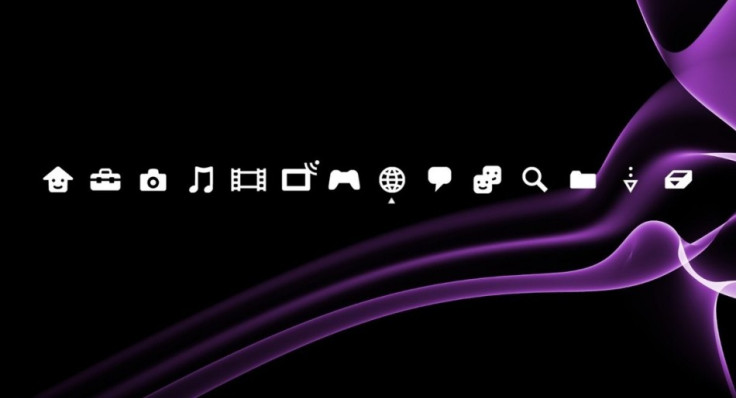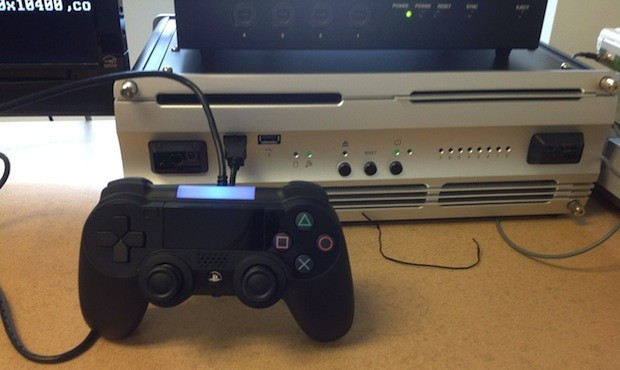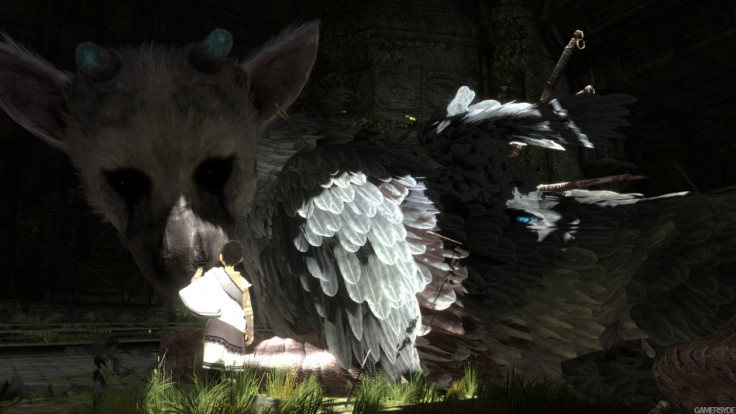Seeing the Future: Sony Needs a Strong Vision for PlayStation 4
Ahead of the console's unveiling on 20 February, analysts predict what the PlayStation 4 will need to do to succeed in the next console generation.

Back in 2006, the PlayStation 3 faltered by spreading its appeal too broadly. On the heels of the PS1 and PS2, both dedicated game consoles with extensive software catalogues, the PS3's "everything in one box" pitch bewildered consumers, who didn't know what the new, very expensive console would give them.
There was muttering about video streaming, music storage and downloadable...something, but very little talk about any killer IPs. The PlayStation 3 struggled at launch because Sony tried to incorporate television, iTunes and the Wii's motion sensitivity, creating a nebulous, ill-defined package that nobody was sure if they needed.
Fast forward seven years and Sony is on the brink of another console launch. On 20 February, journalists and investors will have their chance to "see the future" at the Manhattan Centre in New York City. Speculation around the PlayStation 4 has ranged from the bland, thanks to an endless drip of hardware specs, to the wacky, with this supposed Sony patent from November last year showing a new controller that can be split in half.
But although any truly solid information is yet to surface, what's obvious is that Sony has an even greater struggle with the PS4 - or Orbis or whatever it's called - than it did with the PlayStation 3 back in 2006. The console market is besieged on all sides with tablets and mobiles drawing developers and players, digital downloads usurping boxed sales and more competitors materialising on shelves than ever.
Confusing
Whereas the PS3 tried to integrate an internet browser and media storage, and alienated consumers in the process, the next PlayStation faces the challenge of incorporating not just those things, but also casual gaming and cloud streaming; mobile connectivity and social networking; on-demand TV, touch, sensitivity, motion sensitivity; digital downloads, online play, offline play - all of these things while still remaining, at heart, a machine for playing AAA videogames.
It's an incredibly daunting prospect which, if not handled properly, could threaten Sony's foothold in the living room console market.
"A lot of critics have said that Sony is making a mistake by having quite an undefined product, by saying 'this is an entertainment platform as opposed to a game console' and that could confuse consumers into wondering whether they need it or not," explains Heloise Thomson of Enders Analysis. "I actually think it's good value to have all those things rolled into one, but in terms of marketing it might be confusing."

Nevertheless, Sony has already showed signs of moving into multimedia. It has partnerships with the BBC to pump sporting content through the PS3, as well as on-demand TV services like Netflix, 4OD and LoveFilm. Like Microsoft and its SmartGlass technology, Sony has also begun experimenting with cross-platform functionality, allowing Vita players to swap messages with PS3 users, share media between the two devices and get the Vita version of All Stars Battle Royale for free provided they own the PS3 edition.
Despite the financial missteps following the console's launch, the PS3 and its multimedia aspirations have steadily become more realised, with the redesigned PSN store and updated Photo Album app suggesting that all-in-one functionality will be Sony's priority.
Relationship
Jonathan Doran, of analytics firm Ovum, believes Sony is positioned to shore up its on-demand media services:
"Sony has a better relationship with the public service broadcasters; it has a better foothold than Microsoft. What's going to change more is the development of partnerships between the platforms and TV operators. I think paid TV service providers will vie for prominence on the PlayStation XMB dashboard."
Doran believes that the Xbox SmartGlass app could point the way for the future of this type of integration:
"We might see a more aggressive attempt to introduce a multi-screen experience for TV and for gaming. We've seen this with SmartGlass, whereby you can use your mobile or tablet as a controller but it's missing from the PlayStation platform and it might be an area where they decide to explore further now they've taken more control of the mobile platform with the Sony phones."
"Everyone knows the dual shock is out and there is going to be an LCD touch screen," says Heloise Thomson. "I think they really want developers to experiment with dual-screen connectivity."

Controlling the PS4 via your Sony smartphone, Vita or perhaps a touch-panel on the new controller itself isn't all that's on the cards with Sony's new hardware. A leaked photo of what's supposedly a prototype for the new joypad shows a Move-like sensor on the top, suggesting that motion sensitivity will be more tightly integrated into PS4 games.
The PlayStation 3 had the Sixaxis functionality, which faded out after developers struggled to find things to do with it. But with Microsoft apparently forcing Xbox 720 users to have the Kinect enabled at all times, movement activated controls might step into the foreground during the next console generation.
Activation codes
But also from Microsoft comes the troubling possibility that games may come with activation codes, rendering discs useless once they're installed on a console, effectively destroying the market for second hand software. Sony filed a patent in September, 2012, for an RFID tag that would link discs to consoles or user accounts, making them unplayable on other machines. Whether that technology will appear in the PS4 isn't yet known
However, product keys are already commonplace in the PC market - games like World of Warcraft require a one-use activation code before they can be played. And although console users are acclimated to buying and owning a game, not a license, Heloise Thomson says that activation codes may be necessary to offset the PlayStation 4 development costs:
"Graphics quality is going to be higher on the PS4 than on the Xbox 720...You can already spend around $10 million developing just the graphics for a AAA game and I can imagine that doubling with the next generation.
"From what I understand in terms of the cost of developing a game, a AAA game at the moment costs between $20m and $30m dollars, which is huge - it's three times higher than it was for the PS2. If the graphics capabilities for the next generation are going to be twice as high, you can imagine that development costs are going to go up again. It means they can't under-price their games. The activation codes are going to be killing off the second-hand market so developers are going to get a much greater share of the revenues back."

And if the PlayStation 4 wants to remain an attractive prospect for developers, Sony might have to introduce activation codes, whether they're planned already or not.
"If only Xbox did it and Sony didn't, then that would make developers much more disposed towards Xbox because they would get a greater share of the revenues," says Thomson "but I have heard rumours that Sony will do it also.
"People I've spoken to initially said 'oh, I'm definitely not buying a next-gen console now' but that's just a knee jerk reaction, I think. A lot of gamers grew up in a world where you bought a cartridge and you owned it, but that was a different content ownership world. Now you own a license to use the game - you don't own the game anymore."
The backlash against one-use discs will pass. The PC market has operated on activation codes for years and still maintains a healthy, dedicated player base. The main reason long-term game fans might ignore the PlayStation 4 - or the Xbox 720, for that matter - is that it might be unable to offer a diverse enough split of games.
Micro-consoles
As well as fending off competition from Microsoft and, to a lesser extent, Nintendo, Sony will also be facing a range of cheaper, dedicated micro-consoles. Android's Ouya, Nvidia's Project Shield and Xi3's Piston, aka Valve's Steambox are all set to launch this year and will all, it's expected, come in at a much lower price than a PlayStation.
The threat of spreading the PS4's appeal too far and too thin is amplified by this line-up of smaller machines that will offer core players cheap and simple access to a variety of videogames. The discrepancy between the price of the consoles (Thomson expects the PS4 to sell for around £270, plus tax, compared to the Ouya's £65) is one thing, but the price of developing PlayStation 4 games could limit diversity and alienate more discerning consumers.
The multimedia functionality of the PlayStation 4 might drive customers looking for a bespoke gaming experience into the market for a micro-console; inflated production costs could limit the range of games.

"Because the cost of development is going to be so high, people are only going to be buying games from those top notch, triple-A developers," says Thomson. "A lot of the smaller developers who can't handle the cost are going to be going off onto smaller platforms, more open platforms which are easier to get licenses to develop for.
"It's too much of a gamble for smaller developers," she continues. "If you pack $60m into a single game and it doesn't quite make it then you're dead. You can make more profit off a mobile or social game, and it's a lot easier to get a license and to distribute. It costs maybe $25,000 to develop a flash game online, as opposed to $30m for existing consoles and, potentially, close to $100m with the next generation. So, that's really going to squeeze the market for developers into just the established, huge developers.
"But then, even those developers have a lot, possibly $100, to lose, which means they're going to be relying on a lot of very established franchises like Call of Duty. It will make people more reluctant to be creative," says Thomson "and a lot of players will move towards indie gaming where Ouya and Steambox will have the advantage."
Vision
Sony needs to be decisive with the PlayStation 4. Looking at the growing market for digital, casual and motion sensitive games, as well as the financial threat from things like Ouya, it might seem tempting to retrace the steps of the PS3 and try to offer every single thing in one. But as recently as last year that strategy has been shown not to work.
The Wii U tried to combine hardcore, casual, touch based and motion sensitive gaming, as well as apps and video streaming and has so far seen lukewarm reviews and sluggish reception from consumers. The "everything under one chassis" approach of the PlayStation 3 cost Sony a lot of its credibility with console owners and in order to win that back and to thrive in the next generation, the company needs to pick its battles more carefully. A straight, dedicated gaming platform might be a little too anaemic for today's market, but a gaseous collection of features will prove similarly distasteful.
"I know PlayStation is striving to go beyond the core gamer profile for their customer base," concludes Jonathan Doran, "but I'm not sure how much opportunity there is for them to grow their user base that way. If you look at the iPlayer stats since tablets took off, the console viewing of iPlayer has gone down and has settled at about 5 percent of all views a year. With the development of tablets and more Smart TVs, the console as a set top box may have a limited future. People still have a set top box for their TV and it will take a lot to kick that out."
When the PlayStation 4 is revealed, it's bound to have high-end graphics capabilities, improved connectivity and a fancy new controller. But it will also need a cohesive marketing strategy and a target market. The PS3 was mired by a lot of misplaced ambition; the PlayStation 4 needs to be a lot more focused.
© Copyright IBTimes 2025. All rights reserved.






















